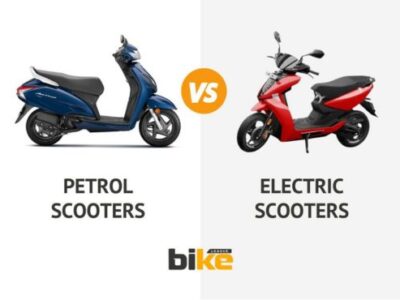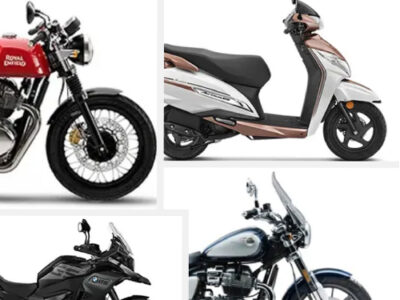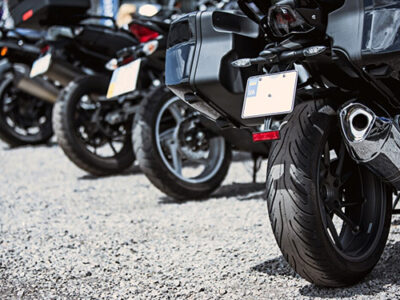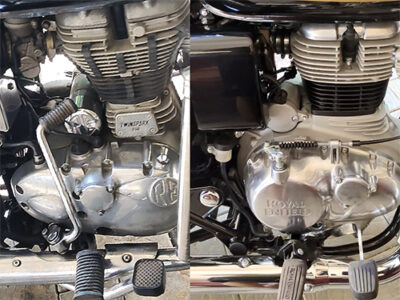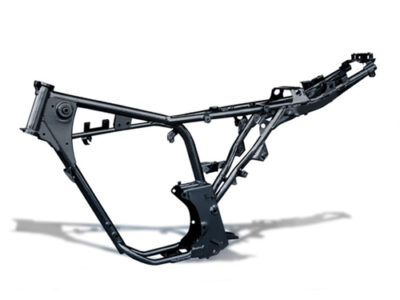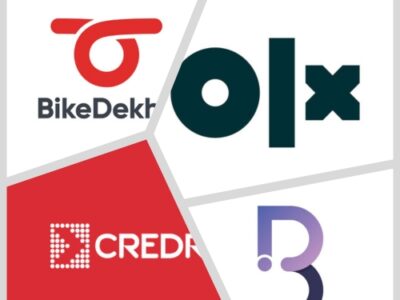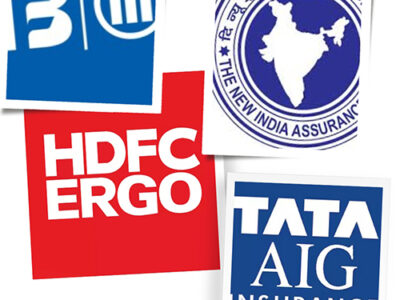
Get ready for an exciting deep dive into the pulse of India’s electric two-wheeler market! This Electric/EV two-wheeler sales report will examine India’s two-wheeler sales data from April to November 2024 and the same period in 2023. These sales figures are crucial indicators of the performance of key electric two-wheeler players, providing valuable data for industry analysts and market researchers in India.
India’s two-wheeler market is dynamic and competitive, with many companies vying for market share. Domestic players like Ola Electric, TVS, and Vida dominate the market.
This report will provide data on electric/EV two-wheeler sales figures for each company in India. We will also focus on major winners and losers, providing comprehensive electric/EV two-wheeler sales data for the market in 2023 and 2024. Join us as we unravel the sales figures of electric/EV two-wheeler companies and uncover what’s driving their successes and setbacks!
Key Takeaways
- TVS electric/ev sales data report shows a remarkable growth of 123%, with two-wheeler sales figures reaching 182,959 units in india in 2024.
- Ather electric sales data report shows that two-wheeler sales figures increased by 42%, with 108,872 units sold in India.
- With a massive 226% growth, Bajaj Auto emerged as a strong contender in the market, selling 106,990 units in India.
- Hero MotoCorp’s Vida electric two-wheeler brand saw a 355% growth in 2023. Sales figures jumped from 12,094 units to 55,057 units in india.
- Ampere ev experienced a significant sales decline, a staggering 37% drop in sales figures in India.
Company-wise analysis of electric two-wheeler sales figures

1. Ola Electric
The sales data report for Ola Electric/ev shows that Ola has achieved a significant milestone with a 66% growth in two-wheeler sales figures in India. From April to November 2024, the company sold 393,648 scooters, up from 236,907 units in the same period in 2023. This remarkable growth is attributed to the company’s robust marketing, improved supply chain, and customer-centric enhancements.
This paints a promising picture of the market’s future. Similarly, TVS and Vida have also shown remarkable growth, instilling optimism about the potential of the electric two-wheeler market in India.
2. TVS Motor Company
The sales data report for TVS Electric/ev shows that TVS two-wheeler achieved a remarkable growth of 123%, with sales reaching 182,959 units in India in 2024. This surge in sales can be attributed to the increasing popularity of the innovative iQube electric scooter. Additionally, the company’s efforts to expand its network have strengthened customer trust and optimism about its future prospects.
3. Ather Energy
The sales data report for Ather Electric/ev shows that Ather Energy ev two-wheeler sales increased by 42% to 108,872 units in India. The company is known for its high-performance models and solid charging network. Ather has continued to grow despite intense competition, showing its strength in the market and inspiring confidence in its resilience.
4. Bajaj Auto
The sales data report for Bajaj Electric/ev shows that With a massive 226% growth, Bajaj Auto ev emerged as a strong contender in the two-wheeler market, selling 106,990 units in India. The success of the Chetak e-scooter played a pivotal role in driving the company’s performance.
5. Hero MotoCorp (Vida)
The sales data report for Hero Electric/ev shows that Hero MotoCorp’s Vida ev two-wheeler brand saw a 355% growth in India in 2023. Sales jumped from 12,094 units to 55,057 units. This rise shows that more people are choosing Hero’s electric scooters. Better marketing and more places to buy the scooters have helped with this increase. This trend suggests a bright future for the brand in the market.
6. Ampere
The sales data report for Ampere Electric/ev shows that Ampere ev two-wheeler experienced a significant sales decline, with a staggering 37% drop. The company saw its sales plummet from 87,392 units to just 55,057 units. This downturn can be attributed primarily to a reduction in government subsidies.
Additionally, the competitive landscape in the affordable e-scooter market became increasingly fierce as several brands emerged. This combination of diminished financial incentives and enhanced competition has profoundly impacted Ampere’s ability to maintain its market share.
7. Okinawa
The sales data report for Okinawa Electric/ev two-wheeler shows that Okinawa’s sales figures plummeted by 78%, from 95,939 to 20,873 units. A series of product recalls, and a waning reputation in the market contributed to this sharp decline.
8. Hero Electric
Hero Electric two-wheeler reported an 87% decline in sales figures, selling only 12,094 units. Subsidy cuts and increased competition caused difficulties for the company, severely impacting its market share.
What factors led to increased domestic sales of electric two-wheelers for Vida, Bajaj and TVS in April-November 2024 vs April-November 2023?
From the ev sales data report, let’s examine the key factors that fueled Vida, Bajaj, and TVS’s surge in domestic sales of electric two-wheelers. This analysis covers the period from April to November 2024 compared to the same period in 2023.
1. Vida (Hero MotoCorp)
Enhanced Product Lineup
Hero MotoCorp, under its Vida brand, launched updated models with better performance, range, and technology. These updates catered to evolving consumer demands, enhancing the appeal of Vida scooters.
Aggressive Marketing and Dealer Expansion
Hero MotoCorp significantly increased its dealer network and marketing efforts, ensuring wider availability and visibility of Vida scooters, particularly in Tier 2 and Tier 3 cities.
Subsidy Awareness Campaigns
Hero actively educated consumers about government subsidies and the financial benefits of EV adoption, making its scooters more attractive in price-sensitive markets.
Improved Charging Infrastructure
Collaborations with third-party providers and the development of charging solutions encouraged buyers, addressing one of the critical adoption barriers.
2. Bajaj Auto
The success of the Chetak e-Scooter
Bajaj’s focus on quality and brand reliability resonated with consumers. The Chetak e-scooter became popular due to its premium build, efficiency, and urban-friendly design.
Resilient Supply Chain Management
Bajaj effectively navigated supply chain challenges, ensuring consistent product availability during peak demand.
Expansion into New Markets
Bajaj aggressively expanded its distribution network, entering previously untapped markets in semi-urban and rural areas.
Strong Branding and Heritage
Bajaj’s legacy as a trusted two-wheeler brand gave the Chetak an edge over competitors, particularly among first-time EV buyers who sought familiarity.
3. TVS Motor Company
Popularity of the iQube
TVS’s flagship iQube electric scooter, with its significant upgrades including improved range, advanced features, and competitive pricing, has positioned itself as a strong contender in the mid-premium segment, piquing the interest of potential buyers.
Focus on Consumer Experience
TVS emphasises user satisfaction by offering end-to-end services, including home charging solutions, warranty extensions, and customer support programs.
Increased Production Capacity
Investments in manufacturing facilities allowed TVS to meet the growing demand for its electric scooters without significant supply disruptions.
Favourable Financing Options
Partnerships with financial institutions enabled TVS to offer attractive financing schemes, making the iQube more accessible to budget-conscious buyers.
What factors led to decreased domestic sales of electric two-wheelers for Ampere, Okinawa and Hero Electric in April-November 2024 vs April-November 2023 ?
In today’s fast-paced market, it’s crucial to examine the challenges that Ampere, Okinawa, and Hero Electric face as their sales dip. What’s contributing to this trend in the electric vehicle sector? Let’s explore the factors and dynamics influencing these brands’ performance.
1. Ampere
Reduced Government Subsidies
Changes to the FAME-II subsidy scheme in 2024 significantly impacted price-sensitive brands like Ampere. Reducing government subsidies led to higher effective product costs, making it difficult for them to compete in the market.
Intense Competition
Ampere struggled to compete against brands offering technologically superior products at similar or slightly higher prices.
Limited Portfolio Appeal
Ampere’s offerings focused on affordability and needed more performance and features of newer competitors like Ola Electric and TVS, which gained customer preference.
2. Okinawa
Reputation Damage Due to Recalls
Okinawa suffered a significant setback due to multiple vehicle recalls linked to quality and safety concerns, which eroded consumer trust.
The shift in Consumer Expectations
As buyers became more discerning, Okinawa’s older models, often perceived as less innovative and lower quality, failed to attract interest.
Subsidy Cut Impact
Like Ampere, Okinawa’s reliance on subsidies to maintain affordability left it vulnerable when government incentives were reduced.
Declining Market Confidence
Negative press around safety issues and inconsistent after-sales service contributed to a loss of market confidence.
3. Hero Electric
Overdependence on Subsidies
Hero Electric’s business model heavily relied on subsidies to offer competitive pricing. The 2024 subsidy changes severely impacted its ability to maintain market competitiveness.
Operational Challenges
Supply chain disruptions and delays in scaling production capacity hindered the brand’s ability to meet demand effectively.
Stiff Competition
Hero Electric faced pressure from brands like Ola Electric, Bajaj, and TVS, which introduced more feature-rich and premium offerings at competitive prices.
Limited Innovation
Hero Electric’s product portfolio struggled to keep up with technological advancements and evolving customer expectations for range, performance, and design.
What are the factors influencing market dynamics of electric two-wheelers in India?
The surge in electric two-wheeler sales in India can be attributed to several dynamic factors reshaping the market. Let’s explore what’s driving this remarkable growth and transformation!
1. Market Growth and Projections
The Indian electric two-wheeler market is on a rapid growth trajectory, with impressive projections for the coming years:
- As of FY2024, the market penetration of electric two-wheelers has surpassed 5.3%, with the market valued at USD 621.11 million.
- The market is forecasted to grow at a compound annual growth rate (CAGR) of 40.34% from FY2024 to FY2031.
- The market is expected to reach a value of approximately USD 2,410 million by 2030, with some projections as high as USD 3,391.52 million.
- Electric two-wheelers are anticipated to account for 60 to 70 per cent of new sales in India by 2030, indicating a substantial shift towards electrification in the segment.
2. Consumer Preferences and Behavior
Understanding consumer preferences and behaviour is crucial for predicting market dynamics. Key insights include:
- Demographics: A significant portion of potential buyers for electric two-wheelers in India are young adults, with 73.4% of interested respondents aged between 18 and 24 and predominantly male.
- Key Factors Influencing Preferences: Awareness about electric bikes, design and aesthetics, and health and safety issues influence consumer preferences.
- Barriers to Adoption: Despite growing interest, concerns about charging infrastructure availability, initial purchase cost, and perceived reliability of electric two-wheelers remain barriers to widespread adoption.
- Consumer Willingness: There is a growing openness to electric vehicles, particularly in tier-one cities, where 70% of car consumers consider electric options for their next purchase. This indicates a similar potential for two-wheelers.
3. Infrastructure Development
The development of supporting infrastructure is critical for the growth of the e2W market:
- Current State: As of recent reports, there are approximately 8,738 operational charging stations across India.
- Future Needs: By 2030, India is projected to require around 39 lakh (3.9 million) public and semi-public charging stations to maintain a ratio of one station per 20 vehicles.
- Battery Swapping: This emerging alternative to traditional plug-in charging offers advantages like reduced downtime. Companies like Battery Smart have made significant progress, setting up 1000 EV battery swap stations.
- Government Support: The Ministry of Power has published revised guidelines to facilitate the establishment of charging stations. EV charging will be made a delicensed activity to encourage private sector participation.
4. Government Policies and Incentives
Government support plays a pivotal role in shaping the e2W market dynamics:
- National Electric Mobility Mission Plan: (NEMMP) 2020 provides a vision and roadmap for EV adoption and manufacturing in India.
- Faster Adoption and Manufacturing of (Hybrid &) Electric Vehicles (FAME) Scheme: This scheme offers incentives to reduce EV purchase costs and supports charging infrastructure development.
- Electric Mobility Promotion Scheme (EMPS) 2024: Launched in March 2024, offering purchase subsidies for electric vehicles, including two-wheelers.
- State-Level Policies: Many Indian states have introduced policies supporting EV adoption, including road tax waivers and incentives for setting up charging infrastructure.
- Financial Incentives: The FAME II scheme offers a subsidy of INR 15,000 per kWh for two-wheelers, significantly reducing the total cost of ownership
5. Competitive Landscape
The Indian e2W market is characterised by a mix of established automotive companies and newer entrants:
- Major Players: Key companies include Hero Electric Vehicles Pvt. Ltd., Ola Electric Technologies Pvt. Ltd., Okinawa Autotech Pvt. Ltd., Ather Energy Pvt. Ltd., Ampere Vehicles Pvt. Ltd., TVS Motor Company, and Bajaj Auto Ltd.
- Market Structure: The market is described as “lightly consolidated,” fostering competition and innovation as companies strive to capture market share.
- Growth Opportunities: The rapid market growth, with a projected CAGR of 35.10% from 2024 to 2032, presents significant opportunities for existing players and new entrants.
6. Economic Factors
Several economic factors influence the e2W market dynamics:
- Manufacturing Costs: While India has traditionally been a low-cost manufacturing destination, rising wages and energy costs are changing this landscape.
- Import Duties: India’s high tariffs and protectionist policies can significantly impact the cost of imported components for e2Ws, potentially affecting pricing strategies.
- Economic Growth: India’s strong economic growth, with a rate of 8.2% in FY23/24, provides a favourable backdrop for e2W market expansion.
7. Technological Advancements
Ongoing technological innovations are shaping the future of the e2W market:
- Battery Technology: Improvements in lithium-ion battery technology are enhancing energy density, charging speed, and overall battery life, which is crucial for improving e2W range and performance.
- Lightweight Materials: Using lightweight materials in e2W construction improves efficiency and range while potentially reducing production costs.
- Smart Features: Integrating GPS navigation, smartphone connectivity, and advanced telematics systems enhances user experience and provides manufacturers with valuable data.
- Charging and Battery Swapping Innovations: Advancements in fast-charging and battery-swapping technologies address key barriers to e2W adoption.
What specific government policies or incentives have significantly impacted electric two-wheeler sales?
Government policies and incentives have been crucial in boosting India’s electric two-wheeler (E2W) sales. Below are some of the most impactful measures:
1. FAME India Scheme
The Faster Adoption and Manufacturing of Hybrid and Electric Vehicles (FAME) India scheme, launched in 2015 and currently in its second phase (FAME II), has been one of India’s most significant policies impacting electric two-wheeler sales.
Impact
- Under FAME II, electric two-wheelers are eligible for a subsidy of Rs 15,000 per kWh of battery capacity, up to 40% of the vehicle’s cost.
- This scheme has been pivotal in encouraging the adoption of electric two-wheelers by reducing the upfront cost for consumers.
- The impact of FAME II is evident in the sales growth, with over 1.05 million electric two-wheelers sold in the first ten months of 2024 alone.
2. Electric Mobility Promotion Scheme (EMPS) 2024
The EMPS 2024 is a government effort to promote electric mobility, albeit with some changes from the FAME II scheme.
Impact
- EMPS 2024 offers a subsidy of Rs 5,000 per kWh battery capacity for electric two-wheelers, capped at 15% of the vehicle’s factory price.
- While this represents a reduction from the previous FAME II scheme, which offered Rs 10,000 per kWh, it still provides a significant incentive for consumers.
- The continued support through EMPS 2024 has helped maintain the momentum in electric two-wheeler sales, as evidenced by the 29.7% quarter-on-quarter sales growth in Q3 FY 23-24.
3. State-Level Incentives
Various Indian states have introduced policies to complement national initiatives, creating a more comprehensive incentive structure for electric two-wheelers.
Impact
- States like Gujarat, Maharashtra, West Bengal, Bihar, Meghalaya, and Assam offer subsidies ranging from Rs 5,000 to Rs 10,000 per kWh, with maximum subsidies of up to Rs 25,000.
- These state-level incentives, combined with road tax exemptions, have significantly reduced the overall cost of electric two-wheelers for consumers.
- The impact of these policies is reflected in the varying adoption rates across different states, highlighting the importance of state-specific incentives in driving sales.
4. GST Reductions
Reducing Goods and Services Tax (GST) for electric vehicles has been another crucial policy measure.
Impact
- The GST on electric vehicles has been reduced to 5%, and the GST on chargers and charging stations has been reduced from 18% to 5%.
- This tax reduction has made electric two-wheelers more affordable, contributing to the overall growth in sales.
- The impact of GST reductions is evident in the increased market penetration of electric two-wheelers, which reached its highest level of 5.5% in Q4 FY 22-23 and Q1 FY 23-24.
5. Production Linked Incentive (PLI) Scheme
The PLI scheme, launched in 2021, aims to boost domestic manufacturing of automotive components, including those for electric vehicles.
Impact
- While the direct impact on sales is less immediate, this scheme has encouraged investments in the EV manufacturing value chain.
- The increased domestic production capacity has led to a broader range of electric two-wheeler models available in the market, catering to diverse consumer preferences.
- This policy has indirectly supported sales growth by ensuring a steady supply of vehicles and components, as seen in the performance of major players like Ola Electric, which sold 348,131 units in 2024, marking a 93.5% increase.
What technological advancements are expected to further enhance the electric two-wheeler market in India in the coming years?
India’s electric two-wheeler market is on the brink of an exciting transformation fueled by groundbreaking technological advancements. Here are some of the key innovations and trends that are set to redefine the future of this dynamic industry:
1. Battery Technology Innovations
Battery technology is at the forefront of e2W advancements, with several key developments expected:
Lithium-ion Battery Improvements
Lithium-ion batteries currently dominate the market, accounting for over 87% of the market share in 2022. Ongoing research is focused on improving energy density, reducing charging times, and enhancing overall battery performance.
Emerging Battery Technologies
Sodium-ion batteries are being developed as a potential alternative, offering enhanced energy density, faster charging times, and improved durability. Solid-state batteries are on the horizon, promising higher energy densities and improved safety compared to current lithium-ion technology.
Battery Management Systems (BMS)
Advanced BMS is being developed to enhance battery efficiency, safety, and longevity, which is crucial for extending the overall lifespan of e2Ws.
Cost Reductions and Performance Improvements
A projected 15-20% reduction in battery costs is expected by 2028, making e2Ws more accessible to a broader consumer base. These advancements are critical for increasing the range and efficiency of e2Ws, making them more competitive with traditional vehicles.
2. Motor Efficiency and Design
Significant improvements in motor technology are anticipated:
Advanced Motor Technologies
Increased adoption of brushless DC motors (BLDCM) and axial flux permanent magnet motors (AFPM) for higher efficiency and performance. Focus on improving torque, reducing weight, and enhancing overall efficiency to contribute to longer ranges and better performance.
Integration with Smart Systems
Motors are integrated with intelligent systems for better control and efficiency, including features like regenerative braking to extend vehicle range.
Performance Enhancements
Advancements in electric motor design and power electronics are expected to improve acceleration, increase top speeds, and enhance overall energy efficiency, making e2Ws more competitive with traditional internal combustion engine vehicles.
3. Smart Features and Connectivity
The integration of smart technologies is set to revolutionise the e2W experience:
IoT and Connectivity
There has been increased integration of IoT connectivity, GPS tracking, remote diagnostics, and app-based controls. Companies like Ola Electric and Hero Electric are leading the way in introducing these innovations.
Enhanced User Experience
Smart dashboards provide real-time vehicle performance, battery status, and navigation data. Mobile app integration for remote vehicle management, including battery monitoring and theft prevention.
Safety Features
Introduction of advanced safety features borrowed from the automotive industry, such as anti-lock braking systems (ABS) and blind-spot detection.
Customisation and Personalisation
The growing trend towards customisation allows consumers to personalise their vehicles with various colours, designs, and features.
4. Charging Infrastructure and Battery Swapping
Advancements in charging technology and infrastructure are crucial for widespread e2W adoption:
Charging Network Expansion
Significant enhancements in charging networks are expected, with an estimated 10,000 new charging stations to be established by 2028.
Battery Swapping Technology
Battery-swapping technology is anticipated to become a game-changer by 2028. This technology allows users to quickly exchange depleted batteries for fully charged ones, significantly reducing downtime. It addresses range anxiety and reduces charging times.
Fast Charging Solutions
Development of fast-charging technologies to reduce charging times and improve convenience for e2W users.
5. Government Initiatives Driving Innovation
Government policies and initiatives are playing a crucial role in accelerating technological advancements:
FAME II Scheme
The Faster Adoption and Manufacturing of Hybrid and Electric Vehicles (FAME II) scheme provides subsidies and incentives for e2W purchases, encouraging manufacturers to invest in R&D.
Electric Mobility Promotion Scheme (EMPS) 2024
Introduced to continue the momentum created by FAME II, focusing on subsidies for two- and three-wheelers with advanced batteries.
Production-Linked Incentive (PLI) Schemes
PLI schemes for Advanced Chemistry Cells (ACC) and Automobiles and Auto Components (AAC) encourage manufacturers to scale up operations and invest in advanced technologies.
State-Level Incentives
Various state governments offer additional incentives, including subsidies and tax exemptions, further driving innovation and adoption.
Market Growth and Future Projections
The e2W market in India is poised for significant growth:
- Projected CAGR of over 35% during 2023-2028, with electric scooters dominating the market.
- Annual sales are expected to increase from one million units in 2023 to seven and nine million units by 2030.
How does the increasing competition and market dynamics impact India’s future electric two-wheeler pricing?
Let’s explore the fascinating factors fueling these changes and uncover how they could shape future prices in this ever-evolving market!
1. Market Growth and Competition
The Indian e2W market is experiencing rapid growth, with projections indicating significant expansion in the coming years:
- The market is expected to grow at a CAGR of 40.34% from FY2024 to FY2031, potentially reaching USD 12.44 billion by FY2031.
- Annual electric two-wheeler sales figures will increase from one million units in 2023 to seven and nine million units by 2030.
This substantial growth is attracting numerous new entrants to the market:
- The number of e2W startups in India has surged from 54 in 2021 to over 150 by 2024.
- Established automotive companies are also entering the e2W segment, intensifying competition.
Impact on Pricing
- Increased Price Competition: As more players enter the market, we expect intensified competition. New entrants, particularly startups, may adopt aggressive pricing strategies to gain market share, potentially leading to overall price reductions across the industry.
- Segmentation and Differentiation: With increased competition, manufacturers will likely focus on market segmentation and product differentiation. This could result in a wider range of pricing options, from budget-friendly models to premium, feature-rich e2Ws.
- Value-Based Pricing: Companies may shift towards value-based pricing strategies, offering products that meet specific consumer demands for sustainability, safety, and brand reliability.
2. Technological Advancements
Ongoing technological innovations in the e2W sector are set to play a crucial role in shaping future pricing:
- Improvements in battery technology, including higher energy density and faster charging capabilities.
- Advancements in motor efficiency and power output.
- Integration of smart features and connectivity options.
Impact on Pricing
- Cost Reduction: As technologies mature and production scales up, manufacturing costs will decrease. This could lower consumer prices, especially for entry-level and mid-range models.
- Premium Pricing for Advanced Features: Consumers are willing to pay for premium features like higher speeds and larger battery capacities. For instance, many will pay up to 10,000 rupees ($120) for upgrades. This trend may allow manufacturers to maintain higher prices for top-tier models with advanced technologies.
- Balanced Pricing Strategies: Manufacturers will likely balance the cost savings from technological advancements with the need to invest in R&D and new features, resulting in a gradual, rather than drastic, price reduction over time.
3. Government Policies and Incentives
Government support plays a significant role in shaping the e2W market:
- The FAME II scheme offers purchase subsidies to reduce the upfront cost of e2Ws.
- State-level incentives, including additional subsidies and tax benefits, further impact pricing.
- Recent policy adjustments, such as reducing subsidies from INR 15,000 to INR 10,000 per kWh, indicate a gradual phasing out of direct financial support.
Impact on Pricing
- Short-term Price Stability: Current government incentives are helping to keep e2W prices competitive. This will likely continue in the short term, supporting market growth and adoption.
- Gradual Price Increases: As subsidies are reduced over time, manufacturers may need to increase prices slightly to maintain profitability. However, technological advancements and economies of scale cost reductions will likely offset this.
- Focus on Cost Efficiency: The gradual reduction in government support will push manufacturers to focus on operational efficiencies and cost-effective technologies to maintain competitive pricing without relying heavily on subsidies.
4. Changing Consumer Preferences
Consumer behaviour and preferences are evolving, influencing pricing strategies:
- Increasing environmental awareness and demand for sustainable transportation options.
- Growing interest in premium features and smart connectivity.
- Shift towards online research and purchasing, with over 85% of consumers starting their purchase journey online.
Impact on Pricing
- Tiered Pricing Models: To cater to diverse consumer preferences, manufacturers will likely adopt tiered pricing models, offering various products at different price points to capture various market segments.
- Transparent Pricing: The shift towards online sales channels will necessitate more transparent and competitive pricing across online and offline platforms.
- Value-Added Services: Companies may bundle additional services or features (e.g., extended warranties, maintenance packages) to justify higher price points and differentiate their offerings
5. Production Costs and Supply Chain Dynamics
Factors affecting production costs will influence pricing decisions:
- Fluctuations in raw material costs, particularly for batteries and lightweight materials.
- Advancements in production processes and automation.
- Potential localisation of supply chains to reduce costs and meet regulatory requirements.
Impact on Pricing
- Cost-Driven Price Adjustments: Manufacturers must balance production cost fluctuations with market demands, potentially leading to periodic price adjustments.
- Economies of Scale: As production volumes increase, economies of scale may allow for more competitive pricing, especially for established players with efficient production capabilities.
- Supply Chain Optimisation: Efforts to optimise supply chains and increase local sourcing may help stabilise prices and potentially lead to modest reductions over time.
Other related links from Bikeleague India
- Two wheeler Sales in India FY 2023-24 | Analysis of Top Brands
- Bike fitness certificate guide – All you need to know
- Electric scooter subsidy in India : A comprehensive guide
- The top 10 bike brands dominating India’s market share
- Yamaha vs Honda vs Kawasaki : Comparing Bike Giants
Conclusion
We hope you know about the electric/ev two-wheeler sales data report and figures for the top electric two-wheeler brands in FY 2023 and 2024. If you have any questions or need more information about the electric two-wheeler sales figures for FY 2023 and 2024, please email us at bikeleague2017@gmail.com or leave a comment below. We’re always here and happy to help! However, don’t forget to check out Bikeleague India on our social media platforms to stay connected!









